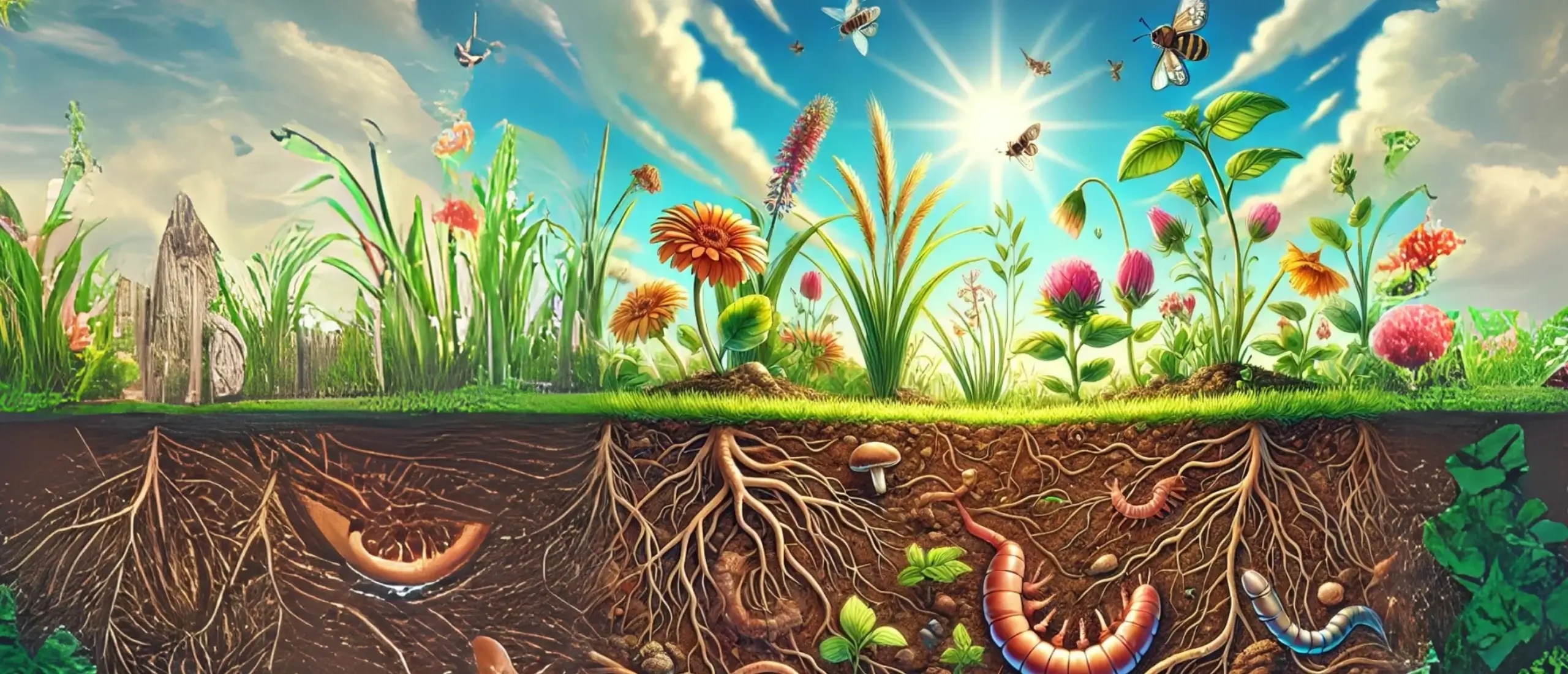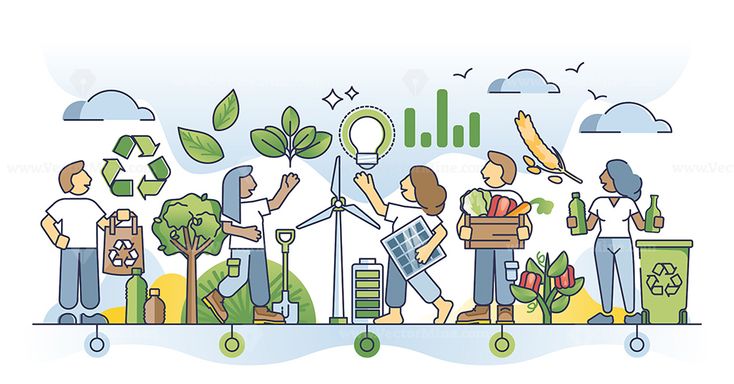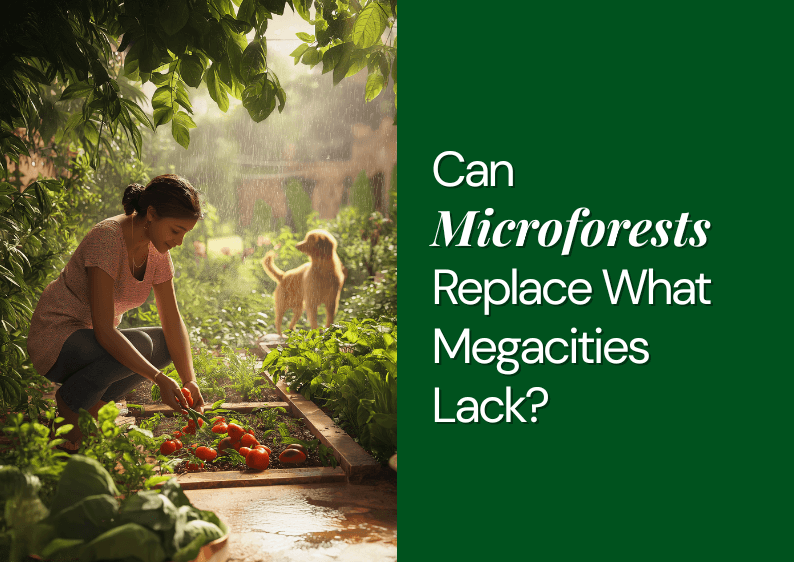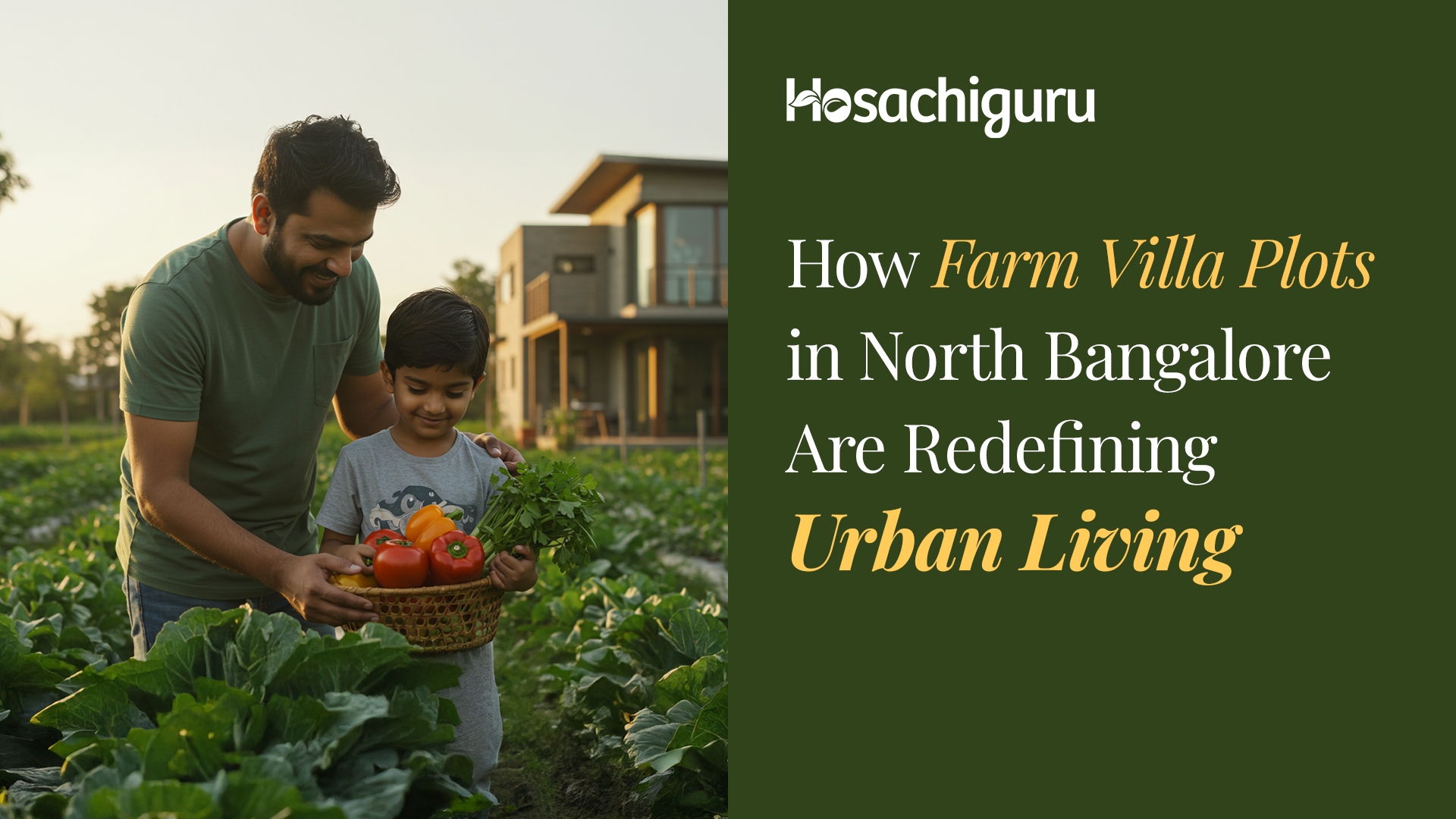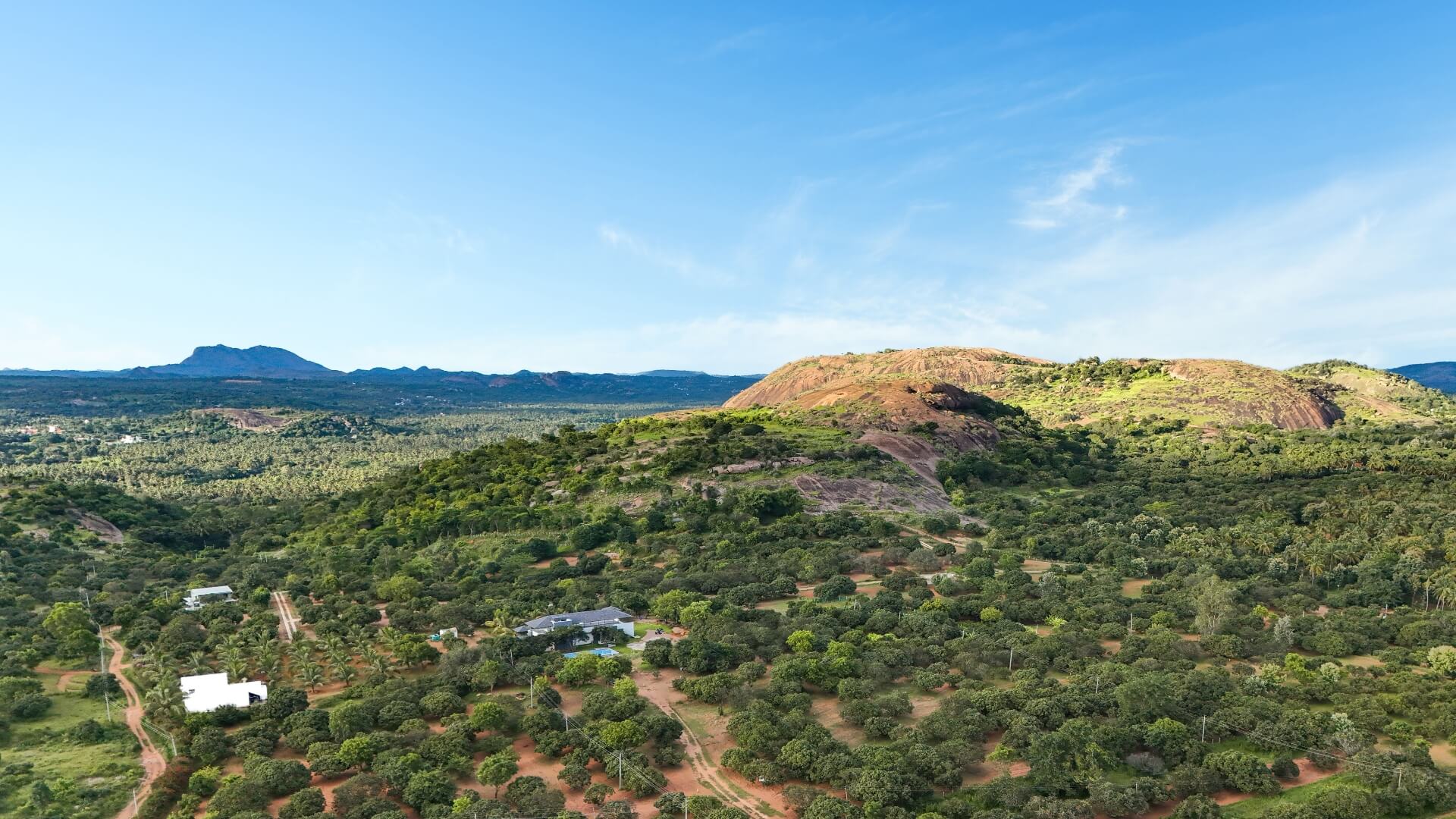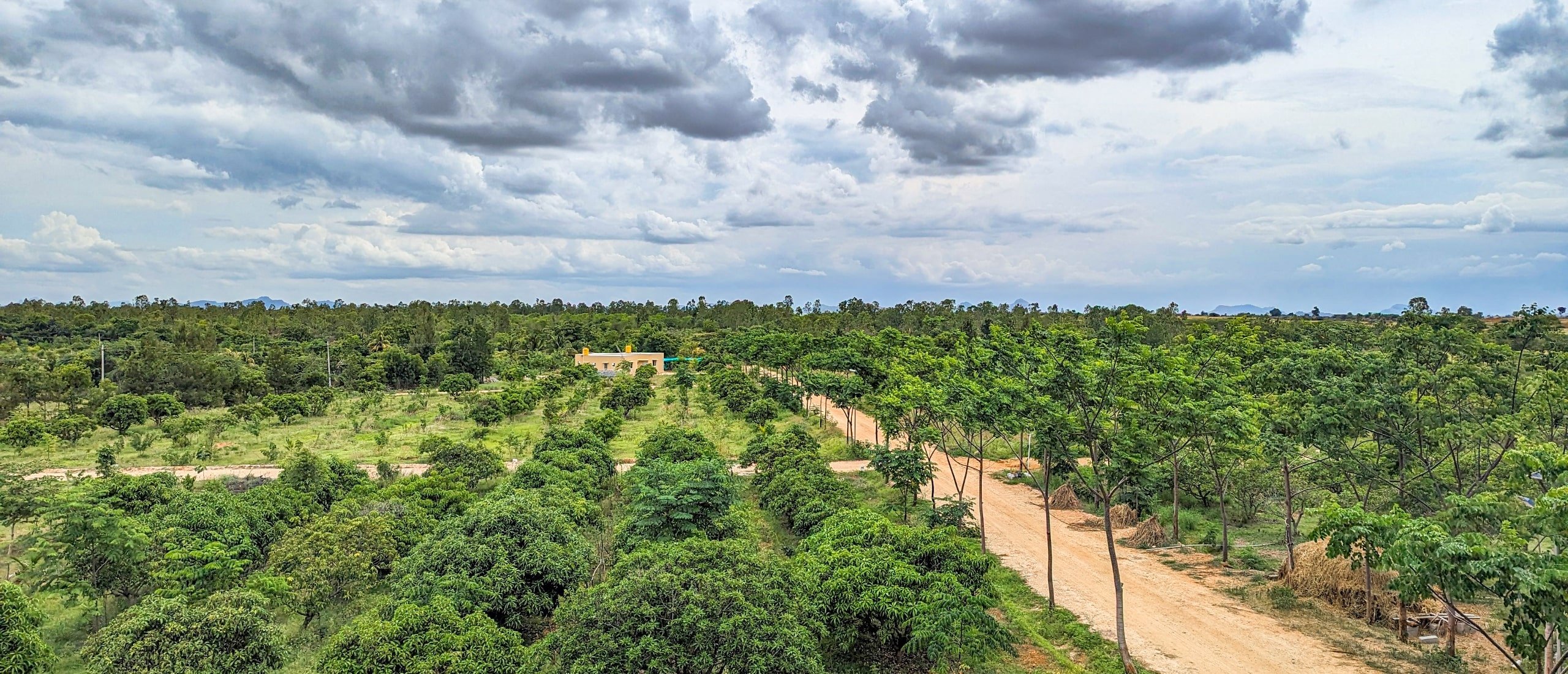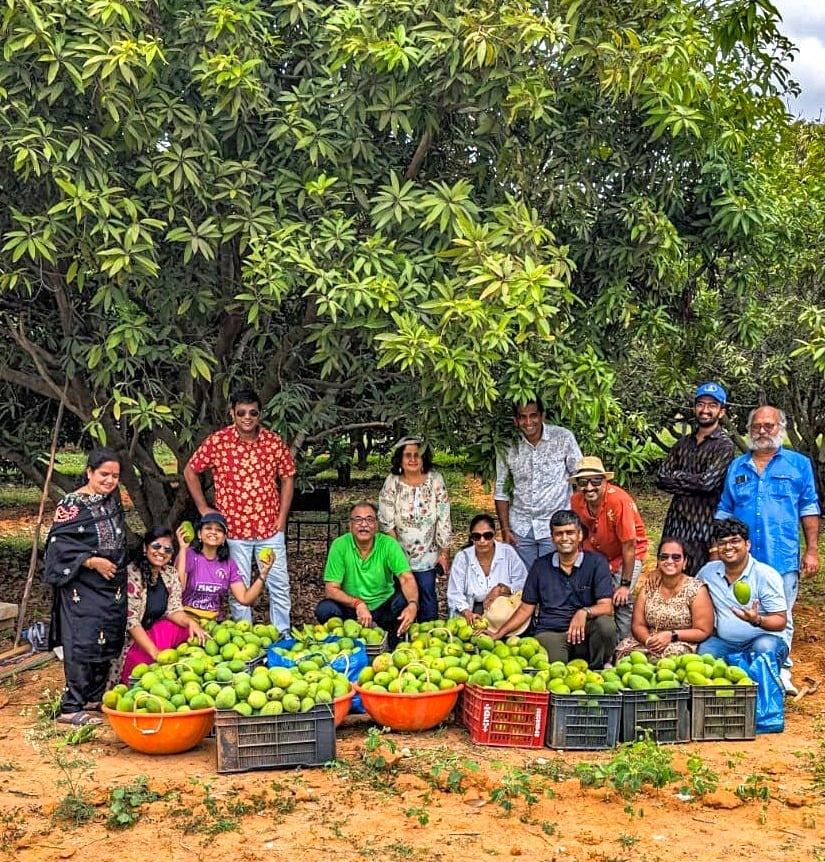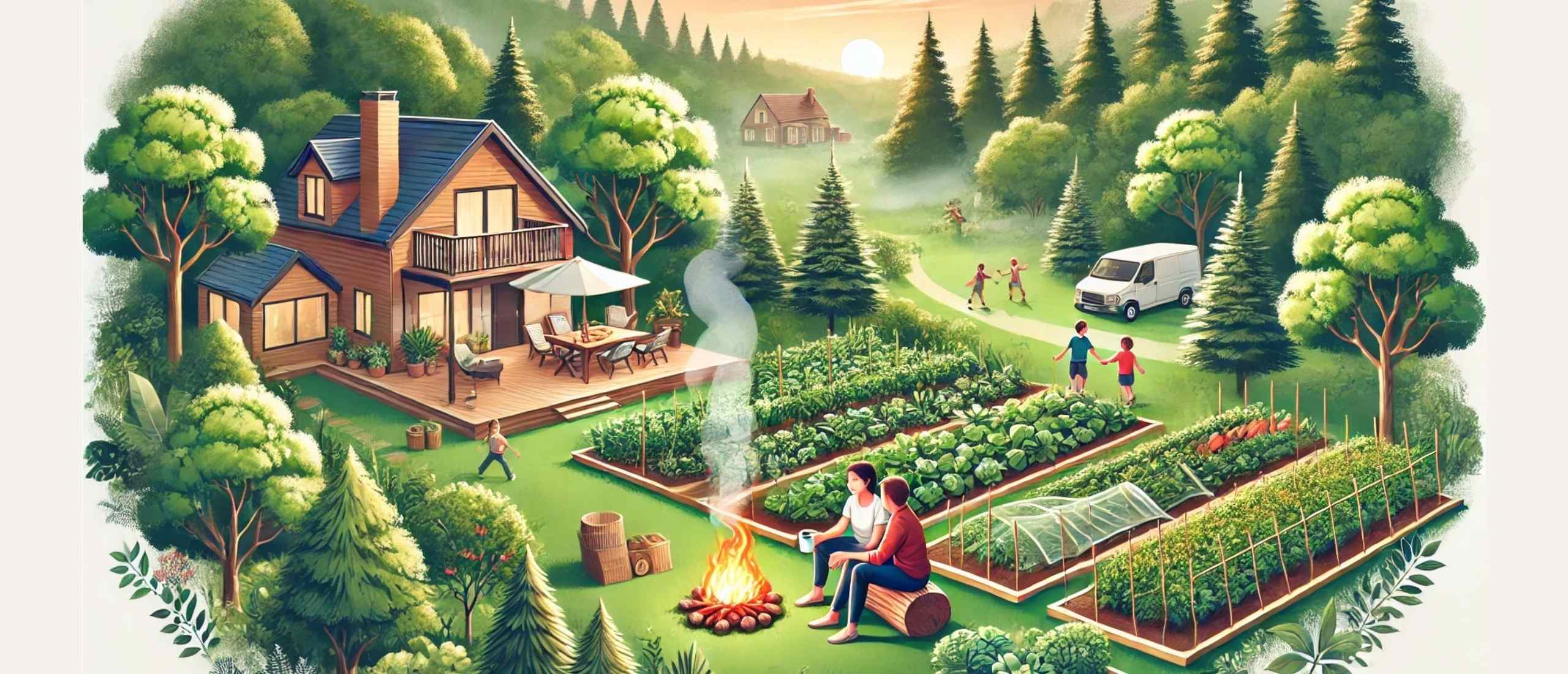March 20, 2023
Author: Srinivas Abhilash
Agriculture has been vital for humans throughout history, providing essential resources like food and fiber. It has changed and adapted to meet new challenges as a society and the environment have changed. From early subsistence farming to modern chemical-based agriculture to sustainable permaculture, it has evolved to meet the needs of the growing population and address environmental challenges. Different approaches have emerged to balance people’s needs with the environment.
Monoculture and Industrialized Chemical-Based Farming
Conventional and modern agriculture is a type of agriculture that emphasizes monoculture. It includes clearing large pockets of land to grow single species of crops, such as corn, wheat, or rice. It supports using synthetic inputs such as fertilizers, pesticides, and genetically modified seeds to maximize food production and generate profits.
Permaculture -A Design system
Permaculture is a sustainable and holistic design system that uses natural resources and traditional knowledge to create a self-sufficient ecosystem. It observes and applies natural systems to human systems to achieve an adaptable, regenerative, and sustainable design. Permaculture offers an alternative to conventional practices for a more equitable and sustainable future. The Managed farmlands based on the permaculture principle design are agricultural systems that mimic the natural ecosystem for a diverse and self-sustaining system. This approach relies on crop rotation, companion planting, and natural predators to manage pests, leading to minimizing external inputs such as fertilizers and pesticides.
Monoculture and World War
Monoculture originated during World War II and the post-war era when food production became a priority for many countries. Large-scale agriculture prioritized efficiency over biodiversity and was adopted globally to address food security and population growth. The Green Revolution in the 1960s and 1970s accelerated monoculture with new technologies. However, monocultures’ adverse environmental and social effects have led to the development of alternative methods like permaculture, which promote more sustainable land use.
Industrialized Agricultural Practices and Chemical Weapons
Industrialized agriculture practices and chemical weapons have a strong connection. Chemical weapons, such as mustard gas and nerve agents, were developed and used in World War I and II. After the war, these destructive practices were repurposed for civilian use in agriculture. Synthetic fertilizers and pesticides were developed from the same chemicals used in chemical weapons, and their widespread adoption in agriculture during the Green Revolution allowed for greater efficiency and yields in food production. However, the use of these chemicals has led to negative impacts on the environment and human health, including soil degradation, water pollution, and harm to wildlife. As a result, more sustainable methods, such as organic and permaculture agriculture, are being promoted as alternatives to industrial agriculture practices.
Drawbacks of Monoculture
- Loss of Biodiversity
- Increased pest and disease susceptibility
- Soil degradation and depletion
- Increased use of pesticides and fertilizers
- Decreased resilience to environmental changes and extreme weather events
- Lower crop yields in the long term
- Reduced genetic diversity among crops
Monoculture and chemical-based farming methods have detrimental effects on our food supply. They strip the land of nutrients, contaminate soil and water, and harm beneficial insects and microorganisms. Embracing sustainable farming practices using permaculture principles can conserve resources, maintain soil health, and create habitats for diverse wildlife.
Permaculture
It was developed in the 1970s by two Australians, Bill Mollison, and David Holmgren. The goal was to create a design-based approach to permanent agriculture, which could support cultures that endure and thrive for generations. At its heart are three simple principles:
- Planet Care -Care for the planet
- People Care -Care for people
- Fair share
Permaculture emphasizes agroecological practices, biodiversity, and community self-reliance. It is rooted in observations of natural systems, traditional farming practices, and modern science and technology. The aim is to create self-sustaining and regenerative systems that promote food security, environmental health, and community resilience. Permaculture can be applied to almost any location and is a low-energy way to grow abundant food. Conscious consumers looking for long-term sustainable investments can identify permaculture based managed farm land near Bangalore.
A property designed with permaculture principles is considered ethical, energy efficient, and has integrated components adapted to natural forces and resilient in nature. Hosachiguru-managed farm land follows permaculture principles, adopt and implements sustainable practices, manages risk, maximizes productivity, and reduces operational costs.
The 12 permaculture principles that can give us pointers toward living a sustainable life are:
- Observe and interact
- It emphasizes the importance of thoroughly observing and understanding the natural systems and patterns in a given environment before taking an action. Bertrand Russell once said, “facts have to be discovered by observation, not by reasoning.” By doing so, one can design human settlements and food production systems that work in harmony with the environment. At Managed farmlands by Hosachiguru, land, and activities on it are observed to understand the topography, climate, and changing directions of wind, and sun
- Catch and store energy
- Sunlight, water, and wind are renewable sources. When in abundance should be conserved for future use. Drawing parallels from the proverb “make hay while the sun shines”, this principle encourages the creation of closed-loop and self-sustaining systems that can function with minimal outside inputs. Mandala gardens at Hosachigru’s managed farmlands are an excellent application of this principle. It is curated in concentric circles and allows wind and sun energy to be captured efficiently and stored.
- Obtain a yield
- This principle involves using the resources and systems established through the first two principles to produce food, materials, and other resources for human use. It is about identifying a balance between meeting human needs and maintaining the health and stability of the natural systems that support us.
- Apply self-regulation and accept feedback
- This principle refers to taking responsibility for our impact on the environment and communities, monitoring our systems, and being willing to make adjustments for sustainability. By accepting feedback from others and our own observations, you can learn from mistakes and improve. Hosachiguru’s managed farmlands are consistently evolving based on land observations and farmers’ feedback.
- Use and value renewable resources and services
-
- It emphasizes the importance of relying on natural resources that can be replenished, like wind, sunlight, and water. By designing our systems to make the most of renewable resources and valuing the services that natural systems provide, you can work in harmony with nature to create more sustainable communities. Land and water management practices such as swales, bioswales, and staggered trenches, are instilled right from the beginning at Hosachiguru’s managed farmland to use and reuse natural resources.
-
- Produce no waste
- It refers to the design of closed-loop systems where waste becomes a resource. Composting food scraps, filtering and reusing greywater, and choosing reusable, and recyclable products to reduce waste. By doing so, you can minimize the impact on the environment and create more sustainable communities that work in harmony with the natural world
- Design from patterns to details
- This reminds us to first understand the patterns and relationships within a system before designing the details. This approach helps us create more integrated and sustainable designs that work in harmony with the natural and social systems around us.
- For example, while designing a garden, you might first observe the natural patterns of sun and shade, water flow, and wind direction. By understanding these patterns, you can then design the details of the garden, such as the location of plants, pathways, and water catchment systems, to work with the natural patterns of the landscape.
- This reminds us to first understand the patterns and relationships within a system before designing the details. This approach helps us create more integrated and sustainable designs that work in harmony with the natural and social systems around us.
- Integrate rather than segregate
- This encourages creating connections and relationships between different elements within a system, whether it’s a garden or a community. By doing so, you can create more diverse, resilient, and productive systems that work in harmony with the natural and social systems around us.
- For example, chickens in the garden will help control pests and fertilize the soil, while bees pollinate the flowers, and plants provide food and shelter for both.
- This encourages creating connections and relationships between different elements within a system, whether it’s a garden or a community. By doing so, you can create more diverse, resilient, and productive systems that work in harmony with the natural and social systems around us.
- Use small and slow solutions
- It encourages taking a gradual and sustainable approach to problem-solving and design. By starting small, observing the results, and taking the time to understand natural and social systems, you can create more effective and lasting solutions that work in harmony with the world around us.
- For example, rather than attempting to transform an entire landscape all at once, we might start with a small plot of land and experiment with different permaculture techniques, such as soil building or companion planting.
- It encourages taking a gradual and sustainable approach to problem-solving and design. By starting small, observing the results, and taking the time to understand natural and social systems, you can create more effective and lasting solutions that work in harmony with the world around us.
- Use and value diversity
- It recognizes the importance of diversity in creating resilient and sustainable systems. By valuing and promoting diversity you can create more adaptable, productive, and sustainable communities.
- Planting diverse crops in a garden or a farm plot promotes biodiversity. The syntropic plantation process is followed at Hosachiguru’s managed farmlands which offer the Co-Farmers varied yields at various times of the year. The diverse plantations also increase microbial diversity to ensure good soil health.
- It recognizes the importance of diversity in creating resilient and sustainable systems. By valuing and promoting diversity you can create more adaptable, productive, and sustainable communities.
- Use edges and value the marginal
- This principle encourages you to find opportunities in the boundaries and margins of a farm plot/garden. It involves creating diverse habitats in edge zones, with resources that are often overlooked or undervalued, such as weeds or waste materials.
- All farm plots at Hosachiguru are defined with diverse and productive edge zones as borders. It involves planting a mix of sun-loving and shade-tolerant plants together with medicinal plants as a part of garden design.
- This principle encourages you to find opportunities in the boundaries and margins of a farm plot/garden. It involves creating diverse habitats in edge zones, with resources that are often overlooked or undervalued, such as weeds or waste materials.
- Creatively use and respond to change
- It is about embracing change as an opportunity for innovation and adaptation to stay open to new ideas and willing to experiment and learn from mistakes.
- By embracing change and responding creatively, more resilient and adaptable systems are created that can thrive even in the face of uncertainty and upheaval.
- For example, adjust rainwater harvesting systems in response to changing rainfall patterns.
- It is about embracing change as an opportunity for innovation and adaptation to stay open to new ideas and willing to experiment and learn from mistakes.
Conclusion
In conclusion, while monoculture and permaculture represent two very different approaches to farming and land management, the choice between them is not simply a matter of personal preference or ideology. Monoculture may offer the potential for high yields in the short term, but it comes with a range of negative environmental and social impacts that can have long-lasting consequences.
On the contrary, permaculture emphasizes diversity, resilience, and working in harmony with natural systems. While it may require more upfront planning and investment, permaculture offers a more sustainable and holistic approach to land management that can benefit both people and the planet in the long term.
Ultimately, the choice between monoculture and permaculture is one that we all must make as individuals, communities, and societies – and it is a choice that will have profound implications for our future well-being and that of the planet.
















